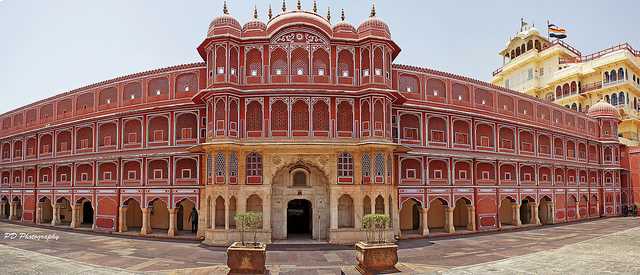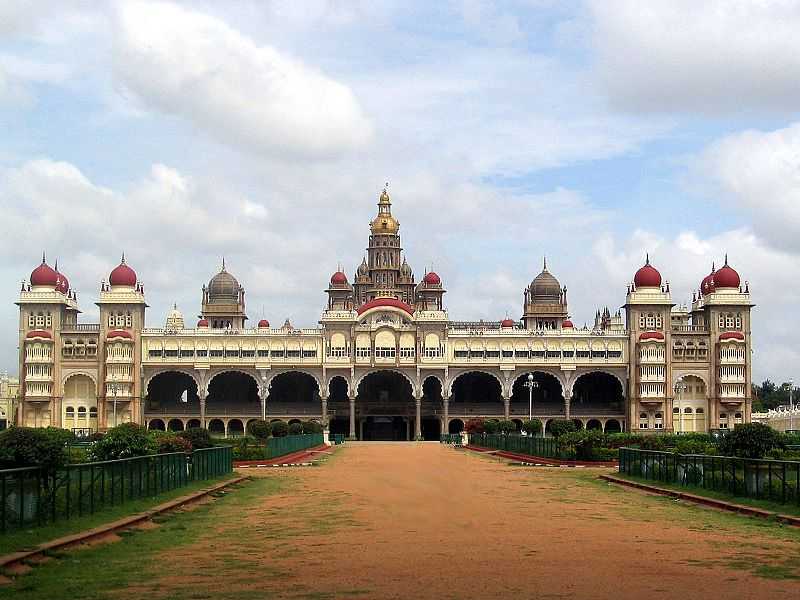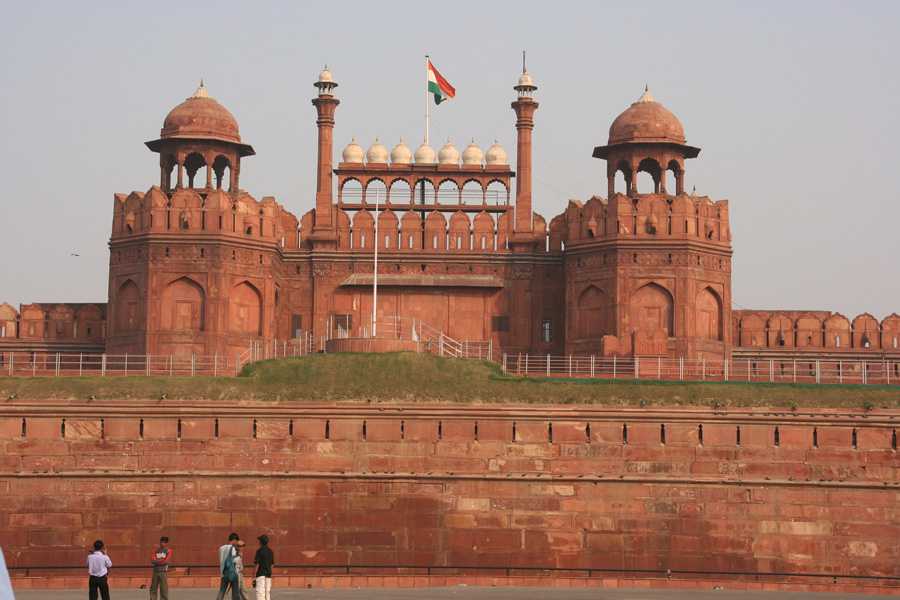1. City Palace, Jaipur

City Palace, Jaipur
City Palace, Jaipur (Source)
The City Palace of Jaipur was constructed in the 18th century by Sawai Jai Singh II, the ruler of Amber, and till the 20th century, many structures were added into the palace by subsequent rulers of the city. The palace is a beautiful amalgamation of various styles of architecture, namely the Mughal, Rajputana and European styles. Jaipur is a city known for its strong and hospitable heritage and culture, and the City Palace, to this date, stands a testimony to that. The integrated pink walls and structures are a part of that heritage, which gives the city its label of the Pink City. On display is a magnificent collection of armory and weapons through ages, and housed within the museum in the palace premises that makes the place a delight to visit for tourists, history buffs and children as well.
2. Mehrangarh Fort, Jodhpur

Mehrangarh Fort, Jodhpur (Source)
The Mehrangarh Fort of Jodhpur is considered to be one of the largest forts in India. The unique thing about the fort is that it is situated at an elevated platform of and very thick walls as boundaries, thus making the fort look very imposing. The fort has 7 distinct gates, one of which still has cannonball imprints so as to signify the wars of the past. Now, there is a museum inside the fort which documents the rich history of the ‘Rathores’ elaborately in the form of paintings, attires, arms, etc.
It’s also interesting to know that a small part of the movie – ‘The Dark Knight Rises’ was shot in this fort.
It’s also interesting to know that a small part of the movie – ‘The Dark Knight Rises’ was shot in this fort.
3. Maharaja’s Palace, Mysore

Maharaja Palace, Mysore
Maharaja’s Palace, Mysore (Source)
The Maharaja’s Palace is one of the biggest tourist attractions in Mysore, and one of the biggest palatial complexes in south India. The official residence of the rulers of Mysore, also known as the Wodeyars who ruled the city from 14th to 20th century. Tucked away very accessibly in the heart of the city facing the Chamundi Hills, the palace is composed of about 14 Hindu temples, gardens and courtyards as well, the palace has some of the most rarely designed rooms. The Gombe Thotti, (Doll’s Pavilion) is a hall designed specially to house Indian and European sculptures, and one of the crown jewels of the collections is a huge wooden elephant that is adorned with 84 kgs of gold. This fort in India is a must visit for those who like exploring the south Indian Royal Heritage.
4. Red Fort, Delhi: One of the most popular forts in India

Red Fort
Red Fort, Delhi (Source)
A UNESCO World Heritage Site, the Red Fort in the Indian capital is the apex of Mughal architecture, and hence, one of a kind structures in the country. It is one of the most well preserved, hence popular forts in India. Made completely out of red sandstone, the fort has been maintained in an excellent condition, and that is why the fort still has not lost its scarlet tinge. Crafted majorly using Islamic architectural sensibilities, the structures within the fort also exhibit strong elements borrowed from the Hindu, Timurid and Persian architectural styles. The fort also went on to become a huge symbol of perfected architecture to various structures designed in the neighboring states.
5. Gwalior Fort, Madhya Pradesh

Gwalior Fort
Gwalior Fort, Madhya Pradesh (Source)
The Gwalior Fort is one of the most majestic forts of central India, not only because of its strong, military style architecture, but also because of the aesthetically painted fortress wall, that sports a bright and royal blue color in the carving. The fort brings together extremely diverse religious faiths, with altars dedicated to Buddhism and Jainism, while the architecture draws freely from the Mughal and Rajput style, and has been home to various dynasties, from the Suris, Mughals and Rana Jats to even the Marathas. The fort developed into a multipurpose fortress-cum-architectural marvel that continues to stand strong and attract history enthusiasts from around the country.





0 Comments